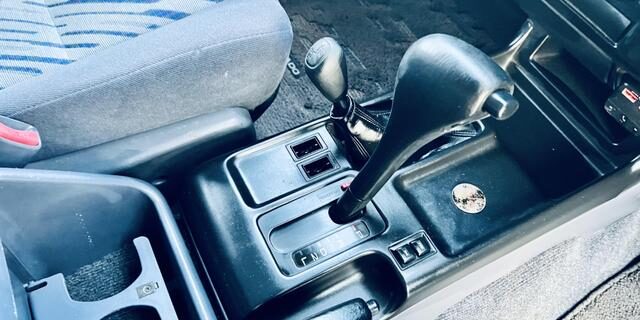The H or L refers to High or Low ratio on the transfer box. H is for driving at normal speeds, L is for driving at slower speeds – mainly off-road. N is neutral – no drive at all.
Just a bit of more insightful explanation about the 4 wheel drive of the Land cruisers, they have three differentials that allow wheels to travel at a different speeds to others. The front diff, rear diff and a center diff that allows the front axle to travel at a different speed to the rear axle. All combined, the three diffs allow each of the 4 wheels to travel at different speeds especially in sharp corners.

The big shift is the driving or gear shift while the small knob on the left is the Four wheel drive controller
LL or HL on the 4WD control refers to the center differential being locked. All 4 wheels are receiving power however unfortunately it only takes loss of traction on one wheel to stop the car from being able to move forward. This is because the center diff sends power to the fastest axle and the axle diff sends power to the fastest wheel. In simple terms that is referred to as “full time” 4×4.
Therefore with the center diff locked, the front and rear axles are forced to turn at the same speed. It now takes a loss of traction on 2 wheels to stop the vehicle moving forward – one at the front and one at the back. This is exactly what you need on a slippery surface, but if you try to drive in this mode on road you risk something called “windup”.
Because tires have high grip on tarmac surfaces it is more likely that the speed difference between the front and back axles around a corner are not going to result in loss of traction. This can result in enormous stress on the car transmission and can damage or even break it.
It is strongly advised to use a locked center diff (4wd control in HL or LL) on loose surfaces or when you’re stuck.







